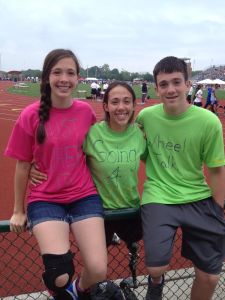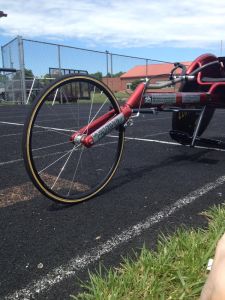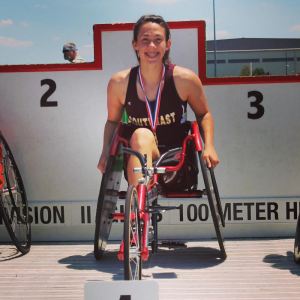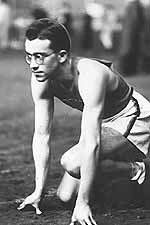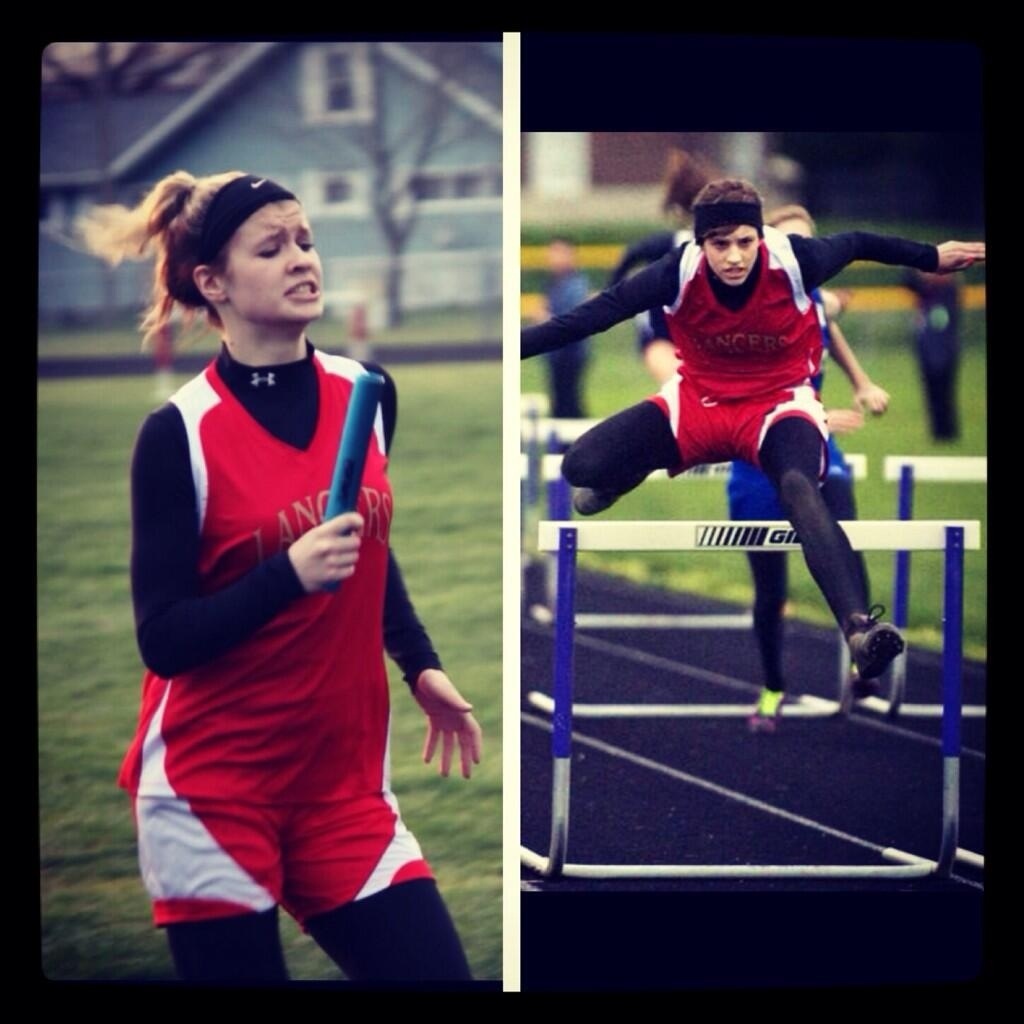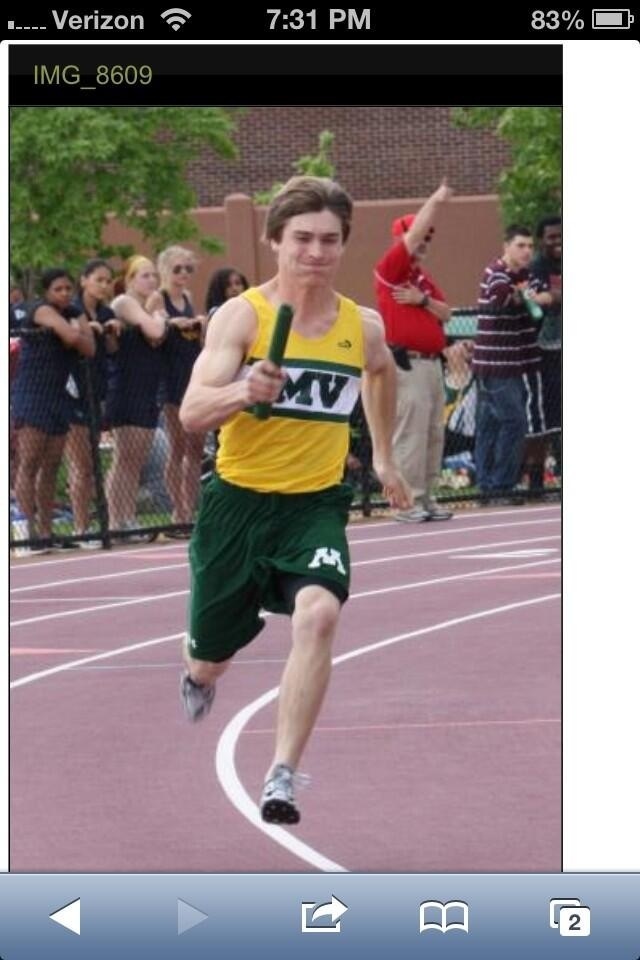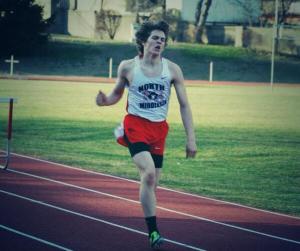
A Little Backstory
On June 18th I participated in my first “pre-masters” track and field meet in Meridian Mississippi. On the surface, this was just another long track meet on a very hot day at a very old high school with terrible bathroom access. To me, this track meet was so much more. For one, I spent about 10 weeks preparing for the big day. For two, I was surrounded by friends and family who truly love me more than I deserve on meet day. More than I deserve because who on planet earth would volunteer to go to a track meet in the conditions described previously?
Now, track and field isn’t a new sport for me. I started doing track when I was in 7th grade and quickly fell in love with the field events. I loved the explosiveness of throwing and the feeling of flying when going over a bar. My mom would tell you that I loved “not running” and that’s probably true too. In my senior year, I traded my dream of playing college basketball for the reality of a track and field scholarship. At the University of Alabama in Huntsville, I was considered a “multi.” A multi in track and field is exactly what it sounds like, you do multiple events. We also have something called a heptathlon in women’s track and field. This is when an athlete competes in seven track and field events: 100m hurdles, 200m dash, 800m run, high jump, javelin, shot put, and long jump. Heptathletes are often multis, but multi’s don’t always do heptathlons.
Whew, are you following me? Multis typically compete in an array of events–several that don’t complement each other. Like the weight throw and pole vault, for example. My best events were javelin and the high jump. However, I competed in just about every field event that I possibly could at our conference and regional meets in order to score points for our team. Scoring is 10-8-6-5-4-3-2-1. First place gets 10 points and eighth place gets one point. Only the top eight athletes per event score points. That being said, I would pole vault at meets where I could get in the top eight. One of my teammates who was an amazing pole vaulter would basically put me through pole vault boot camp a month before our conference meet. Was it pretty? No. Did it work? Yes. Some might call this crazy, but we did win our conference meet during my senior year! #everypointcounts

Many of you know the story of how I tore my left ACL while throwing the javelin. If you don’t, you’ll hear it one day. When I was rehabbing through my injury, I created an anonymous Twitter account @track_probs. For the longest time, I used that as an interface between the training room where I was doing all of my rehab and the thousands of Trackletes (track athletes) around the world that followed @track_probs. I am actually crossposting this on my Track Probs Twitter and blog (the last time I posted here I was 27). Did you know the name Physiolete was actually kind of born from the word Tracklete..discovered on @track_probs? Story for another day.
Shameless plug, if you are “still on” Twitter, like my husband, follow me @track_probs! If you are seeing this on Twitter follow us on Instagram at PhysioletePT.
The transition from Half Marathon to “Half Heptathlon-ish”
Before we talk about my training for the track meet, let’s talk about the transition. Every year since we started Physiolete Therapy and Performance, Lauren Buckalew and I have led a Tuscaloosa Half Marathon training group. We call ourselves the Physiolete Fleet. During the pandemic in 2021, we led a virtual half marathon and 5k training group, we added the 5k because I was 3 months postpartum and quite frankly 3.1 miles was about all I could muster up. 2020 and 2021 were hard years for many of us and to save my word count (yes I have a lot more to say) I’ll leave you with my exercise mantra for those years: “I’m here.” This was a 180 from pre-mom Nadia who worked out 6 days a week and felt horrible if she missed a day in the gym. In 2022 we were back to an in-person training group and I set a big goal of pushing my one-year-old daughter in the Bob Stroller for race day. I did all but two long runs without her, she was my “rabbit” for training. A rabbit in the running world is a pacemaker. Pushing her was my excuse for running at the speed of “Hi, I’m here today!” Because regardless of if I pushed her or not, my pace wouldn’t have changed. After stressing for a week about how I was going to sneak a stroller into the Tuscaloosa Half Marathon (apparently the rule book had a statement about no strollers), Rory came down with a fever the night before race day. As much as I wanted to wake her up at five in the morning and make her run with me, I decided she probably needed the rest. I told Lauren since I didn’t have Rory I wanted to try to set a personal record (PR). Prior to 2022, I had run two half marathons: my first one for my bachelorette party and my second one when I found out I was pregnant a week later. That morning I got overconfident and boldly told Lauren I wanted to run it in under two hours. Lauren, who is also a Sports Physical Therapist and avid runner (she’s run a few sub-two-hour half marathons) talked me out of my crazy goal, citing it would be near impossible for me to shave a whole minute off of my average mile time, times 13.1 miles. She has always been a voice of wisdom in my life and I am very thankful we just took my pace from “I’m here” to “I’M STILL HERE!” Thanks to Lauren, I did break my previous half marathon record.
Since I was on a “Half” roll, the night of the Tuscaloosa Half Marathon I decided I would sign up for either a Half Ironman or a “Half-Heptathlon.” After discussing my lack of swimming abilities with several people, I determined I would go with three or four of the seven events in the Heptathlon. I was in between the Alabama State Games in Dothan and the Mississippi State Games in Meridian. I opted for Mississippi because it was much closer to my home base. As a Sports Physical Therapist, I knew this “comeback” was going to take more than my own knowledge and preparation. That night I enlisted a dietician, a strength and conditioning coach, and a pole vault coach,
Nutrition – Caroline Brantley
I always use training for a half marathon as an excuse to literally eat whatever, whenever. When you are running four days a week and burning so many calories, you can get away with a little more than usual. This is not healthy or correct, which is exactly why I called my friend Caroline Brantley to help prepare for my track meet. Caroline is getting her Ph.D. in nutrition at The University of Alabama.
Quick PSA. Things that I know about eating and performance now, that I wish I knew when I was in college.
First, the ugly side of nutrition and performance
- Disordered eating may give you short-term performance gains, but long term it creates issues that can be detrimental to your health.
- Severely restricting calorie intake may help you drop weight, but it’s not sustainable and it’s dangerous.
- Exercise Bulimia, overexercising to burn calories, doesn’t make you a better athlete–it makes you sick.
Now, the bright side of nutrition and performance
- Food is fuel for your body, cars don’t run on empty and neither do people
- Good nutrition improves body composition, simply put: you can weigh more and look/feel better than you do at a lower weight
- Good nutrition and proper rest are precursors to peak performance
I wish I knew this in college because at that time my fear of gaining weight from lifting heavy stood in the way of unlocked potential. Fast forward to now, after many years of educating myself on the benefits of proper nutrition, I understand that food and weight training are performance-enhancing and LEGAL!
When I met with Caroline my sole goal was to improve my muscle mass. After training for the half marathon I was running on empty. Caroline helped me put together a plan to increase my overall calorie intake, particularly increasing protein. After 10 weeks of consciously eating more throughout the day and properly timing carbs before workouts and proteins after, I gained two pounds of muscle and weighed exactly the same! Not going to lie, I was thankful to have my quads back for summer. This is just a tiny example of how you can look different regardless of what the scale says.
If you are a competitive athlete struggling with disordered eating, you should 100% talk to a Sports Medicine Doctor and consider finding a Sports Dietician, like Caroline. Do it now. Before the stress fractures, before the missed opportunities and performances, before the anxiety, before it’s too late.
Follow Caroline Brantley on Instagram.
Strength and Conditioning – Casey Metoyer
Nutrition is an excellent segue into Strength and Conditioning. Similar to Nutrition, Strength and Conditioning has a whole field of study! People literally go to college and get their bachelor’s degree, master’s degree, or even a Ph.D. in subjects that fall under the umbrella of “Strength and Conditioning.” I preface this section with, there is no way on planet earth I will cover everything you need to know about Strength and Conditioning in this section, but I can promise you one thing–if you are a competitive athlete, you need a Strength and Conditioning (S&C) Coach.
This looks different for people in all walks of life too, of course. If you are a college athlete, more than likely you have someone with their Certified Strength and Conditioning Speciality (CSCS) strategically planning all of your workouts for an entire year. If you are a middle or high school athlete, you may have access to a S&C Coach either at your school or in your town. Unfortunately, not every athlete has access to an actual S&C Coach because of location or financial reasons. If this is the case, there are great resources on the internet for coaches, parents, and athletes to read and watch to at least establish some form of programming.
I am a Sports Physical Therapist. I specialize in returning athletes back to sports. A lot of times there is crossover during the period where a client is finishing with me and getting back to their sport where the workouts may start looking like something a S&C Coach would assign, but I am not a S&C Coach. This is why I called my friend Casey Metoyer to help me prepare for my track meet. Casey has over a decade of experience with Strength and Conditioning and is getting his Ph.D. in Performance Science at The University of Alabama. When Casey interviewed me about my goals and equipment list, I literally said: I need to be able to work out in my garage, with minimal equipment and minimal time. My goals were to not get injured and to look somewhat graceful doing my events. Casey took my needs and customized 10 weeks of programming to fit not only my unique goals but also prepare me for the events I would be performing at in the Mississippi State Games. Casey is the perfect example of what to do when you say you don’t have physical access to a S&C Coach. He used an app called True Coach to program all of my workouts, monitored my progress, and updated my exercises weekly to ensure we were appropriately training.
On weeks that I didn’t feel good, he helped me figure out if I needed to lower my weight or just rest. On weeks I felt great, he encouraged me to push myself further. At the end of the day (or beginning I should say, most of my workouts were at 5 am) I didn’t care what Casey told me to do, I was just so thankful he had a plan! Between Casey’s workouts and Caroline’s nutrition advice I was able to gain two pounds of muscle, improve my overall power, and most importantly, I did not get injured during my short season!
Follow Casey Metoyer on Instagram.
Pole Vault – Britainy Short
Thankfully, Coach Britainy didn’t make me submit any videos of my previous pole vaulting form as an application for lessons with her and she cheerfully took me on as one of her oldest athletes.

Coach Britainy pole vaulted at The University of Alabama and is now the owner of Elevate Academy. She coaches not only college pole vaulters at Alabama, but also athletes of all ages from around the state. Pole vault is often one of those events that holds so much untapped potential because many schools don’t have the proper equipment or coaching to safely teach their athletes how to vault. At Elevate Pole Vault, Coach Britainy removes that barrier by providing not only her excellent athlete and coaching experience but also access to safe pole vaulting and training equipment.
I LOL-ed at our first practice. Coach Britainy told me that she thought I might be running a little slow down the runway because I was still recovering from the half marathon. I told her this was a nice excuse for the day, but when she learned that I am actually just slow I wouldn’t be able to use the half marathon as an excuse any longer. We started with “grass plants” which is literally running with your pole, planting, and working on rowing your arms. I almost sprained my ankle doing this as a warm-up. I immediately started to question some of my life decisions.
At the end of each lesson, Coach Britainy would take a video of me going down the runway. When I look back at all of these videos from our first practice to our last, it’s really unbelievable. I told her that I wished I had a video of my “vaulting” in college so that I could show her just how terrible I actually was at this event–fortunately I must not have allowed anyone to video me because I couldn’t find any evidence of what I had been telling her all along. Working with Coach Britainy opened my eyes to focus on the basics. Prior to working with Coach Britainy, I only wanted to get over a bar. She broke everything down from the way I ran down the runway to the way my toes should point when I was upside down. She creatively used drills on the rings, track, and even in my garage to help improve my form. Everybody wants to fly gracefully over a bar and set a PR, but not everyone wants to grass vault for 20 minutes in 102-degree heat. Kobe Bryant once said, “Why do you think I’m the best in the world? Because I never get bored with the basics.” While I am far from being anywhere near Kobe in the track and field arena, I am a better pole vaulter because of Coach B and my grass vaults.
Follow Coach Britainy Shorter on Instagram.
Meet Day
Meet day at the Mississippi State games was a success! I hit my goals of not getting injured and looking somewhat graceful. I hadn’t actually practiced shot put until the day of the meet, but I threw further than my age in feet. I didn’t clear 4’10” in the high jump, but I did clear 4’8.” It was also priceless seeing my 65-year-old mom showing me how to arch my back on my last attempt at 4’10.” When I reminded myself that I practiced high jump only one time a week, ran a small business, and helped a 19-month-old human survive over the last 10 weeks I felt a little better. Last, but not least, I cleared 7’6” in the pole vault. To many, this doesn’t sound like a big deal, but to me, this was my biggest victory. I’m afraid of heights and being injured, especially now that I am a physical therapist. The more I pole vaulted, the more worried I grew–why was I putting myself through this? I was one jump away from breaking my ankle, I just knew it! However, I stuck with the plan that all of my lovely friends gave me. I listened to Coach Britainy. I trusted the process and I kinda sorta looked like a pole vaulter going over that bar. When I turned going over the bar (something I never did in college) I could see Coach Britainy and all of my friends and family jumping for joy.



Final Thoughts
I am so thankful for Caroline Brantley for helping me get my nutrition back on track, Casey Metoyer for working with my little home gym to help me #getswolt, and Britainy Shorter for taking this adult pole vaulter seriously. Several mornings Rory woke up early and “helped me” finish my workouts AKA made them longer while I wrestled my jump rope back from her. Elliott and Rory often came to the track on Monday nights and we had a few jump-offs along the way. The track meet came and went, but the hard days, good times, and lessons along the way won’t be forgotten. Greg Anderson said, “Focus on the journey, not the destination. Joy is found not in finishing an activity but in doing it.”

Copyright © 1999 – 2022 GoDaddy Operating Company, LLC. All Rights Reserved. Privacy Policy
Do not sell my personal information






